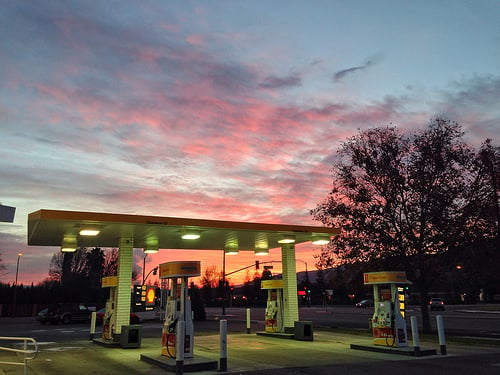How to Fix Bad Gas in a Car
When you’re asking the question ‘how do I fix bad gas in my car’, you’re talking about a different kind of situation than fixing bad stored fuel...

When filling up your vehicle's tank at the gas station, you might be wondering what is the difference between regular gasoline and the fuel they call ethanol? Should I be using one over the other? Have I been putting the wrong type of fuel in my vehicle?
 Often times the choice is based on price, availability, and the manufacturer's recommendations. Depending on what area of the country you’re in, you may not even be able to find regular gasoline that doesn’t have
Often times the choice is based on price, availability, and the manufacturer's recommendations. Depending on what area of the country you’re in, you may not even be able to find regular gasoline that doesn’t have
Don’t let the wrong choice keep you from improving the performance and fuel efficiency of your vehicle.
If ethanol is less efficient than gasoline and can even damage cars, why is it being blended and sold?
First, gasoline blended with ethanol burns cleaner than pure gasoline. Ethanol cuts a car’s greenhouse gas emissions. The additional of ethanol to gasoline makes it an “oxygenate” which satisfies the requirements of the Federal legislation known as the Clean Air Act.
The second reason is that ethanol comes from corn, and it is big business. Agribusiness is a powerful lobby in Washington and with environmentalists siding with them on this issue; the use of ethanol will spread. Recently, the Environmental Protection Agency allowed E15 to join E10 at the fuel pump.
While E10 is widely available, E15 gasoline is only sold in a handful of states and then in just a few filling stations. E15 is sold in Kansas, Iowa, and Nebraska.
When the Environmental Protection Agency approved E15, it restricted its use and excluded the following from running on it.
Most cars that were manufactured after 2001 and made to run on “flex fuel” can use E15. All major vehicle manufacturers are exploring voiding warranties on cars using E15 despite engineered for no more than E10 fuel.
In addition, the cost of pure gasoline or ethanol-blended gasoline is about the same, making the only reason to use ethanol-blended gas an environmental one.
Regulations established by the Environmental Protection Agency for implementation of the Energy Independence and Security Act of 2007 call for increases in ethanol gasoline production to 36 billion gallons by 2022. During the first year of the act’s implementation, the level of production was only 9 billion gallons. This caused ethanol production to skyrocket.
If trends continue, availability of ethanol-free gas is going to keep decreasing. By 2022, finding pure gas in the United States will be a difficult challenge.
The possible exception to this would be if there's a change in political climate or if they decrease the mandate of the Renewable Fuels Standard. Lowering the required yearly volume would create more space in the marketplace for ethanol-free gas.
Fortunately, consumers can take steps to counteract the bad effects of ethanol by using high-quality fuel system additives that have no ethanol or alcohol of any kind in them. Products are available for small engines, boat engines, car engines, and most any type of gasoline internal combustion engine.

When you’re asking the question ‘how do I fix bad gas in my car’, you’re talking about a different kind of situation than fixing bad stored fuel...

Spring has sprung, and people all around the country are bringing their boats out of winter storage and getting them ready for running the water....

So why does gas go bad? It all has to do with gasoline's chemical composition.